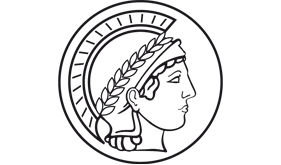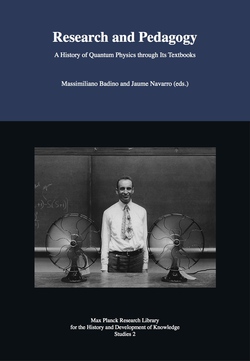Historians of quantum physics and early quantum mechanics have seldom paid attention to the ways the new theory was integrated in physics textbooks, perhaps taking for granted that novelties in science can only be taught once they are fully understood and generally accepted. The essays in this volume challenge this view by studying some of the early books and textbooks in which quantum theory was first introduced. By so doing, the authors show the many ways books and textbooks embody pedagogical and research practices in certain local environments (geographical, disciplinary, in terms of expertise, etc.), as well as the circular feedback between research and pedagogy.
Textbooks can become the subject of a history of early quantum physics since the very process of writing a textbook, (i.e., of trying to organise a new doctrine to the newcomer in an accessible way), together with its life as an object that is issued, used, changed, and abandoned, incorporates many of the tensions between research and pedagogy. Furthermore, the life of these books can also help us better situate less known actors in the history of quantum physics, by bringing into the picture the reasons, the context, the research agenda, and other aspects that cannot be found in the publication of research papers or in the abundant correspondence between the main physicists involved in this story.
The case studies collected in this volume may, at first glance, look like a heterogeneous set. Some books were not, in fact, primarily addressing quantum theory as such, but including some of its early principles in re-shaping the established foundational principles and modes of teaching in fields such as optics and physical chemistry. Others were written by scientists not directly involved in the development of the new physics, and their books were addressed at an audience interested in having only a superficial knowledge of the theory of quanta. Finally, the main actors in the formulation of quantum theory wrote books on the quantum for different purposes: as a way to organise their thoughts, to spread a particular interpretation of the theory, or to press for their personal research agendas, among others. This heterogeneity is, however, the tool the editors use to give a full picture of the role of early textbooks in the history of quantum physics.
1 Pedagogy and Research. Notes for a Historical Epistemology
of Science Education
Massimiliano Badino, Jaume Navarro
2 Sorting Things Out: Drude and the Foundations of Classical Optics
Marta Jordi Taltavull
3 Max Planck as Textbook Author
Dieter Hoffmann
4 Dissolving the Boundaries between Research and Pedagogy: Otto Sackur’s Lehrbuch der Thermochemie und Thermodynamik
Massimiliano Badino
5 Fritz Reiche’s 1921 Quantum Theory Textbook
Clayton A. Gearhart
6 Sommerfeld’s Atombau und Spektrallinien
Michael Eckert
7 Kuhn Losses Regained: Van Vleck from Spectra to
Susceptibilities
Charles Midwinter, Michel Janssen
8 Max Born’s Vorlesungen über Atommechanik, Erster Band
Domenico Giulini
9 Teaching Quantum Physics in Cambridge: George Birtwistle and His Two Textbooks
Jaume Navarro
10 Paul Dirac and The Principles of Quantum Mechanics
Helge Kragh
11 Quantum Mechanics in Context:
Pascual Jordan's 1936 Anschauliche Quantentheorie
Don Howard
12 Epilogue: Textbooks and the Emergence of a Conceptual Trajectory
David Kaiser
B
Back, Ernst E. A.
Bardeen, John
Basset, Alfred B.
Bechert, Karl
Bederson, Benjamin
Birge, Raymond T.
Birkhoff, Garrett
Birtwistle, George
Bloch, Felix
Bohr, Niels
- 1
- 2
- 3
- 4
- 5
- 6
- 7
- 8
- 9
- 10
- 11
- 12
- 13
- 14
- 15
- 16
- 17
- 18
- 19
- 20
- 21
- 22
- 23
- 24
- 25
- 26
- 27
- 28
- 29
- 30
- 31
- 32
- 33
- 34
- 35
- 36
- 37
- 38
- 39
- 40
- 41
- 42
- 43
- 44
- 45
Atomic model
Correspondence principle
Boltzmann, Ludwig
Born, Max
Bose, Satyendra Nath
Bothe, Walther
Bragg, William
Brattain, Walter H.
Bridgman, Percy W.
Briggs, Lyman J.
Brillouin, Léon
Bronstein, Matvei P.
Brose, Henry L.
Buchner, Eduard
Burgers, Johannes M.
D
E
F
H
Haber, Fritz
Hahn, Otto
Hall, Edwin
Hamilton, William R.
Hannaway, Owen
Hardy, Godfrey H.
Hartree, Douglas
Hatfield, Henry S.
Heilbron, John L.
Heisenberg, Werner
- 1
- 2
- 3
- 4
- 5
- 6
- 7
- 8
- 9
- 10
- 11
- 12
- 13
- 14
- 15
- 16
- 17
- 18
- 19
- 20
- 21
- 22
- 23
- 24
- 25
- 26
- 27
- 28
- 29
- 30
- 31
- 32
- 33
- 34
- 35
- 36
- 37
- 38
- 39
- 40
- 41
- 42
Helmholtz, Hermann von
Hertz, Gustav
Hilbert, David
Hill, Edward L.
Hund, Friedrich
Höpfner Sommerfeld, Johanna
K
L
Ladenburg, Rudolf
Lagrange, Joseph L.
Landau, Lev D.
Landé, Alfred
Langevin, Paul
Laplace, Pierre S.
Laporte, Otto
Larmor, Joseph
Latour, Bruno
Laue, Max von
Lawrence, Samuel L.
Lenard, Philipp
Lennard-Jones, John
Lenz, Wilhelm
Lewis, Exum P.
Liebig, Justus
Lifshitz, Evgeny M.
Lin, Chun
Lindemann, Frederick A.
Lodge, Oliver
Lorentz, Hendrik A.
Love, Augustus E. H.
Lummer, Otto
M
P
Partington, James R.
Paschen, Friedrich
Paul, Theodor
Pauli, Wolfgang
- 1
- 2
- 3
- 4
- 5
- 6
- 7
- 8
- 9
- 10
- 11
- 12
- 13
- 14
- 15
- 16
- 17
- 18
- 19
- 20
- 21
- 22
- 23
- 24
- 25
- 26
- 27
- 28
- 29
- 30
- 31
- 32
- 33
- 34
- 35
- 36
- 37
- 38
- 39
- 40
- 41
- 42
- 43
- 44
- 45
- 46
- 47
- 48
- 49
- 50
- 51
- 52
- 53
- 54
- 55
- 56
- 57
- 58
- 59
Pauling, Linus
Penney, William
Piaget, Jean
Planck, Max
- 1
- 2
- 3
- 4
- 5
- 6
- 7
- 8
- 9
- 10
- 11
- 12
- 13
- 14
- 15
- 16
- 17
- 18
- 19
- 20
- 21
- 22
- 23
- 24
- 25
- 26
- 27
- 28
- 29
- 30
- 31
- 32
- 33
- 34
- 35
- 36
- 37
- 38
Black body law
Quantum hypothesis
Poincaré, Henri
Preston, Thomas
Päsler, Max
S
Sackur, Otto
Sarton, George
Schlapp, Robert
Schlick, Moritz
Schrödinger, Erwin
Schwarzschild, Karl
Segrè, Emilio
Senter, George
Serber, Robert
Shockley, William B.
Siertsema, Lodewijk
Sieveking, Hermann
Slater, John C.
Smekal, Adolf
Snow, Charles P.
Solvay
Solvay Conference 1911
Solvay Conference 1927
Solvay Conference 1930
Sommerfeld, Arnold
Spengler, Ostwald
Stark, Johannes
Stefan, Josef
Stern, Otto
Stuewer, Roger
Swann, W. F.
Sylvester, James J.
W
Information
ISBN
978-3-945561-24-9
DOI
10.34663/9783945561249-00
Pages
304
Publication Date
Sept. 10, 2013
Print on Demand
currently unavailable
Suggested Citation
Badino, Massimiliano and Navarro, Jaume (eds.) (2013). Research and Pedagogy: A History of Quantum Physics through Its Textbooks. Berlin: Max-Planck-Gesellschaft zur Förderung der Wissenschaften.
Submitted by
Kostas Gavroglu
Editorial Team
Jeremiah James

